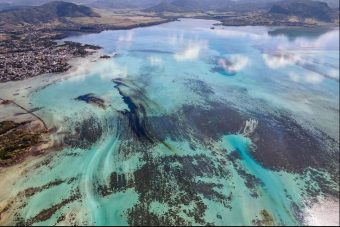
Oil spills are a major environmental problem that occurs every year worldwide, affecting oceans, seas, rivers, and lakes. Although the world is familiar with the issues and changes in salt water, the effects oil spills have on freshwater are less understood.
A team of researchers from the American Chemical Society simulated oil spills in rivers and then studied what happens chemically to the oil in freshwater environments such as rivers and lakes. They collected water samples at various points during the nearly two-month experiment to analyze the changes.
We know some of the basic problems that oil creates when it is poured into water, such as the darkening of the surface of the water that it creates due to its structure, and it disrupts photosynthesis in plants since they cannot get enough sunlight. Of course, the quality of the water decreases, and the poisoning of animal life is also possible. The river vegetation, diverse river banks and downstream water flow often make cleaning difficult, so it is necessary to form a dam in a suitable location to “catch” the oil spill. However, research has shown that these are not the only problems oil spills cause in freshwater ecosystems.
Research has shown that as oil ages in freshwater, it undergoes chemical changes that lead to the formation of new compounds. These compounds get more oxygen atoms, making them more stable in water but also more harmful than in the sea and ocean. Oxygen-rich compounds, especially sulfur oxide derivatives, may have more impact on aquatic life.
More:
- WEALTHY COUNTRIES HAVE LEARNED THEIR LESSON – THEY ARE TRYING TO RESTORE THEIR ESTUARIES
- DESALINATION SOLVES THE PROBLEM OF WATER SHORTAGE BUT REQUIRES THE USE OF A LARGE QUANTITY OF ENERGY
- NEW EU RULES TO IMPROVE URBAN WASTEWATER TREATMENT AND REUSE
Last year, over 30,000 liters of oil were spilt near the village of Čelarevo in Serbia, as a result of which river beaches were closed.
One of the significant cases of oil spills in the river happened in Russia a few years ago, when a company was fined with the biggest penalty on record for causing an environmental disaster. This occurred in 2020 when about 21,000 tons of diesel leaked from the company’s tank into the Ambarnaya River in the Arctic north of Russia. The contamination affected the river and the surrounding area, with the pollution spreading to Lake Pyasino, which flows into the Kara Sea. In total, the oil contaminated an area of 350 square kilometers.
A significant oil spill also occurred in Ecuador in 2022. The incident was caused when heavy rains triggered a landslide, after which the oil pipeline was damaged due to falling rocks. The oil contaminated the Coca River and almost two hectares of the protected area of the National Park.
In all, 2023 saw ten significant oil spills, one of which was large-scale, with over 700 tons of fuel oil spilled in Asia in February. The remaining nine incidents involved smaller spills, which occurred around the world—four in Asia, two in Africa and Europe, respectively, and one in the Americas. These developments add to the annual average of around 6.8 major spills, which is in line with the averages from the previous decade, according to ITOPF data.
Energy Portal

